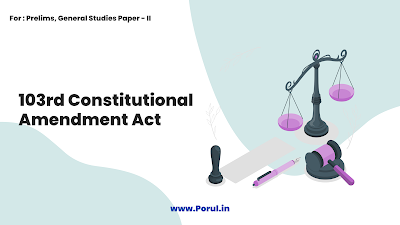MODEL PRISON MANUAL, 2016 for UPSC Exams

WHAT IS MODEL PRISON MANUAL? Model Prison Manual, 2016 is a set of guidelines developed by Ministry of Home Affairs. It covers about prisoner classification and privileges, disciplinary action and complaints procedures, sanitary and hygiene regulations, etc., Related Articles: Article 39 (a) Fair justice also deals with prisoners. Article 14,19,20,21 and 22 deal with Rights of prisoners. WHY TO READ? The union Home ministry has asked the states of Union Territories who have not adopted Model Prison Manual so far, to bring in accordance with guidelines provided by Manual. Prison is a state subject.




